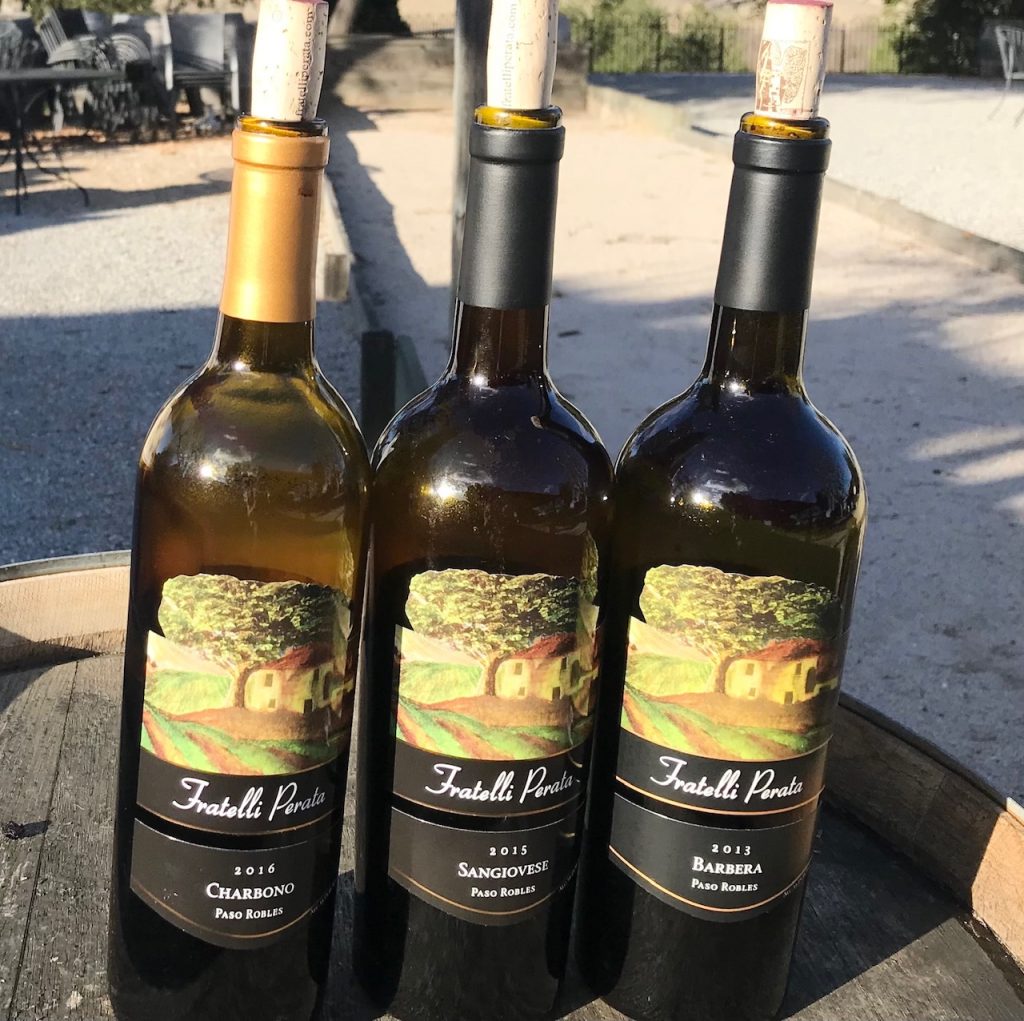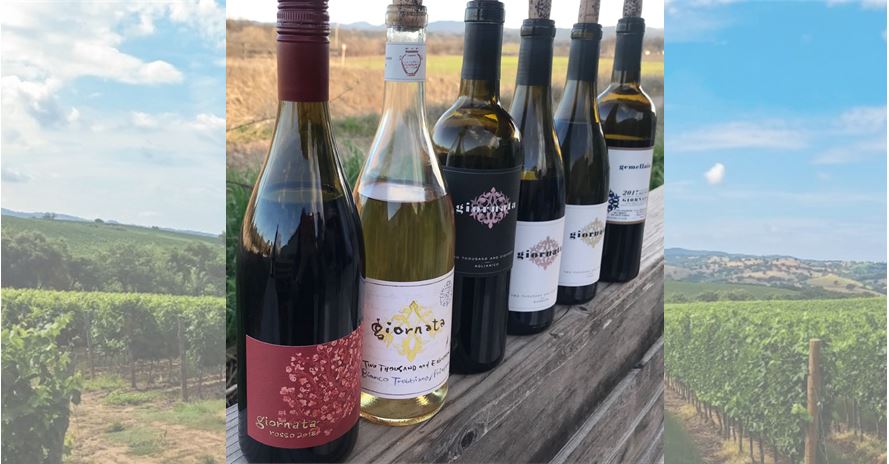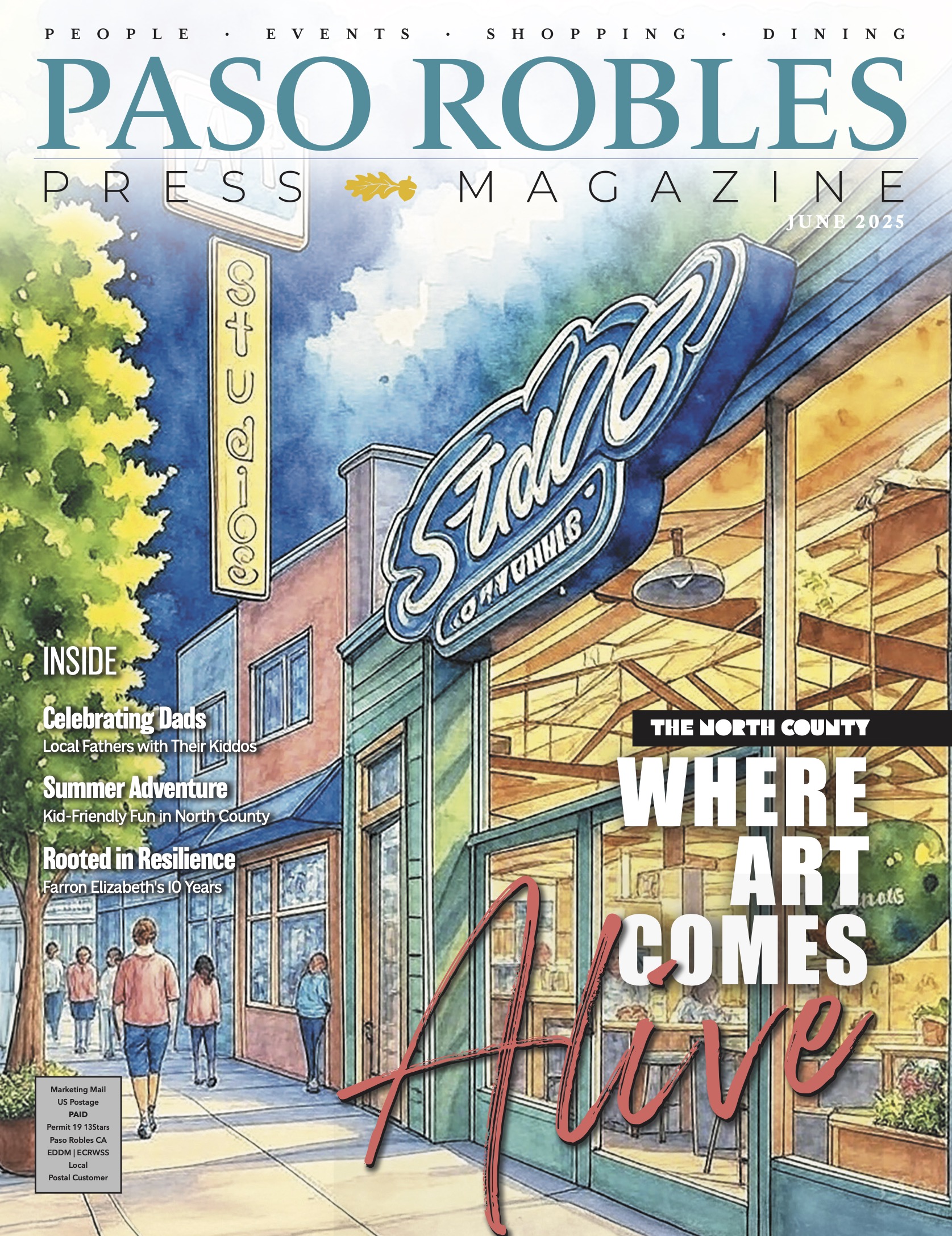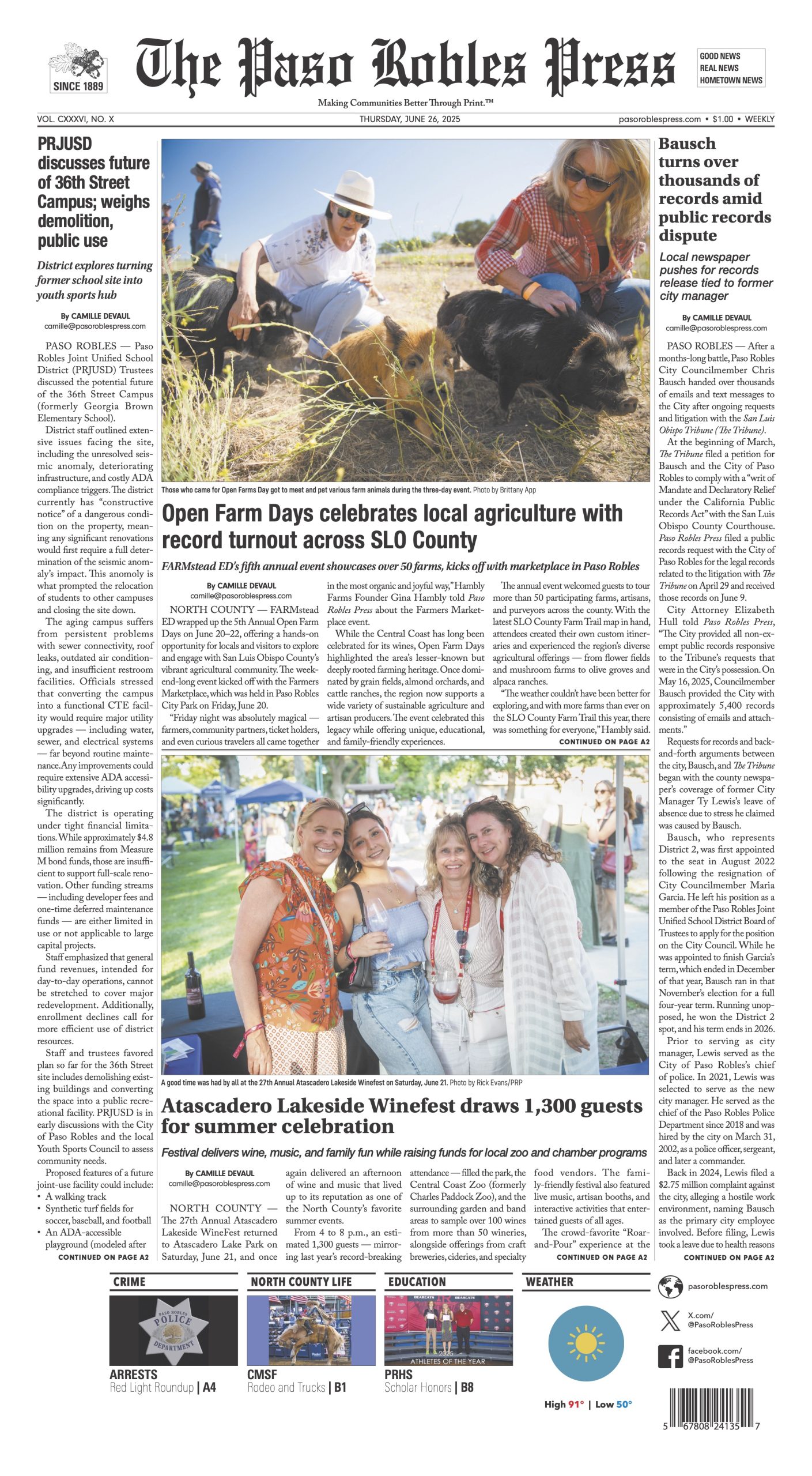
Who knew? Our local wine region loves Italian varietals.
Not only do these grape varieties thrive in Paso Robles but winemakers are crafting exceptional wines from them that make Italian wine lovers feel right at home.
Gary Eberle, Paso pioneer and vintner who first planted barbera in 1975 at then Estrella Winery, is willing to go even further.
Sitting in the tasting room of his namesake Eberle Winery, he swirls a dark red wine his glass and makes this statement: “I genuinely believe barbera is one grape we do better than the Italians.”
Stephy Terrizi, viticulturist who co-founded Giornata Wine with her husband Brian, recalls a recent comment from an Italian visitor sipping Giornata’s nebbiolo at her tasting room in Tin City. “This tastes like home,” the woman said.
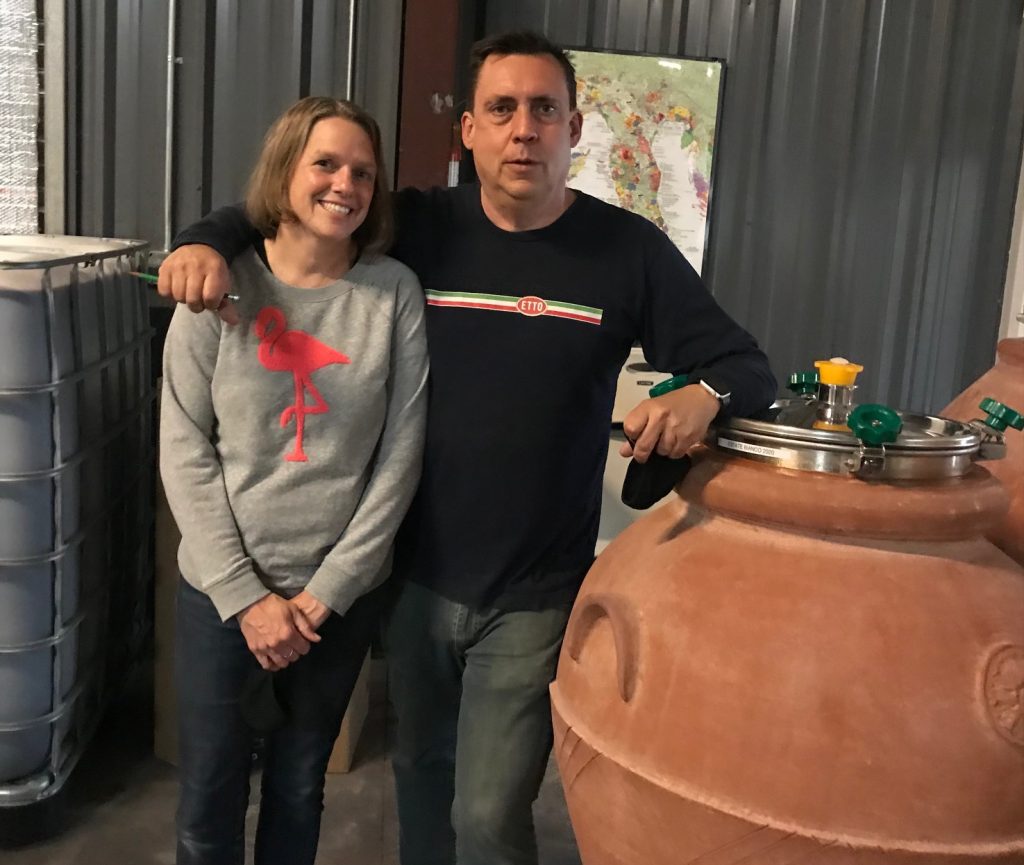
“We are not trying to copy what Italians do, but do respect tradition,” notes Terrizzi.
If there is a popular Italian wine in Paso, hands down, it’s sangiovese, the traditional variety of Tuscany. However, minuscule plantings of other varieties native to Italy’s Piedmont, Abruzzi and Campania regions can be found in Paso and parts of Monterey and Santa Barbara Counties: varieties such as barbera, nebbiolo, aglianico, montepulciano, nero d’Avola and dolcetto among the reds and falanghina, fiano, malvasia bianca and arneis among the whites.
In fact Eberle offers me a historical quiz. When he arrived in California in the early 1970s, what were the two most widely planted grapes in the state? His answer: grenache and barbera.
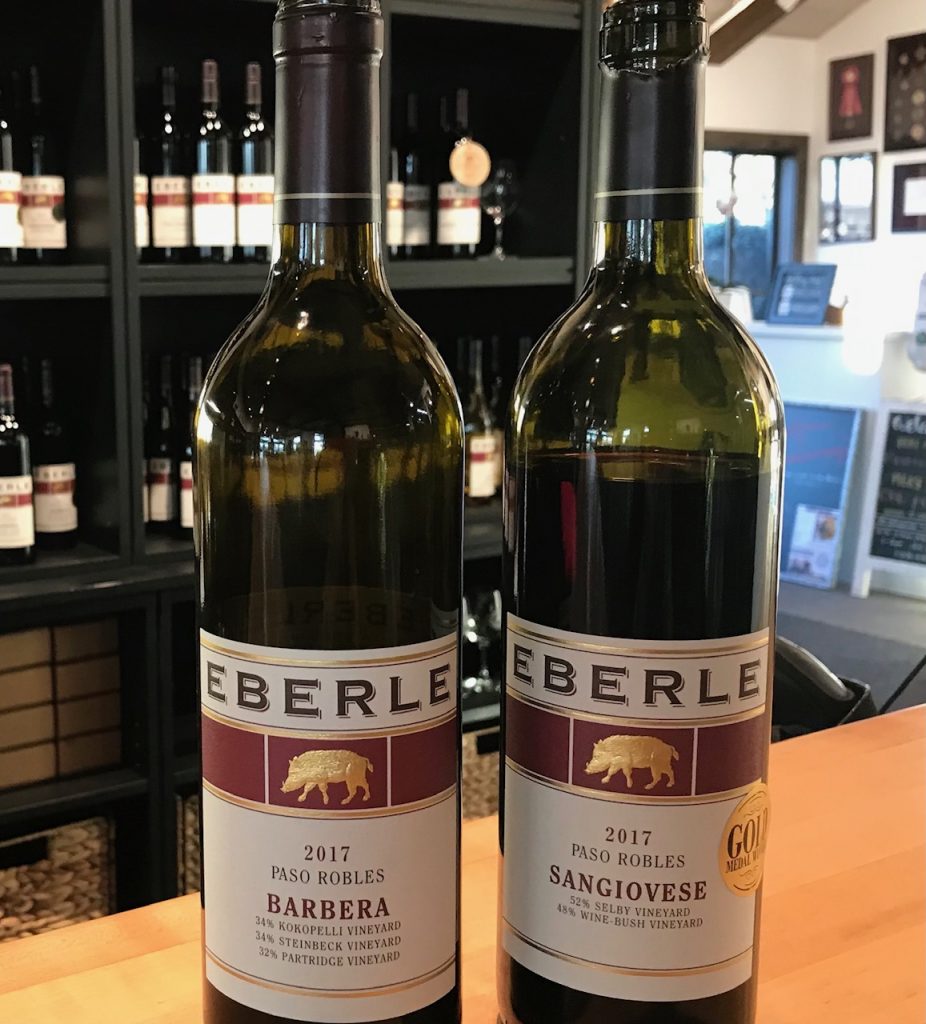
“They were known as valley grapes and blended as hearty jug wines,” said Eberle. However, his introduction to barbera (native to Italy’s Piedmont region) came through Napa Valley’s Louis M. Martini Winery.
In 1975, while working at Estrella Winery, Eberle planted 14 acres of barbera, cuttings he acquired from the University of California, Davis (UC Davis). Those cuttings made their way to Norman vineyards and from there to Steinbeck Vineyards, the fruit of which is bottled today as Eberle Winery’s barbera. The medium-body 2017 vintage in our glasses was lush with Bing cherries and exuberant with bright acidity.
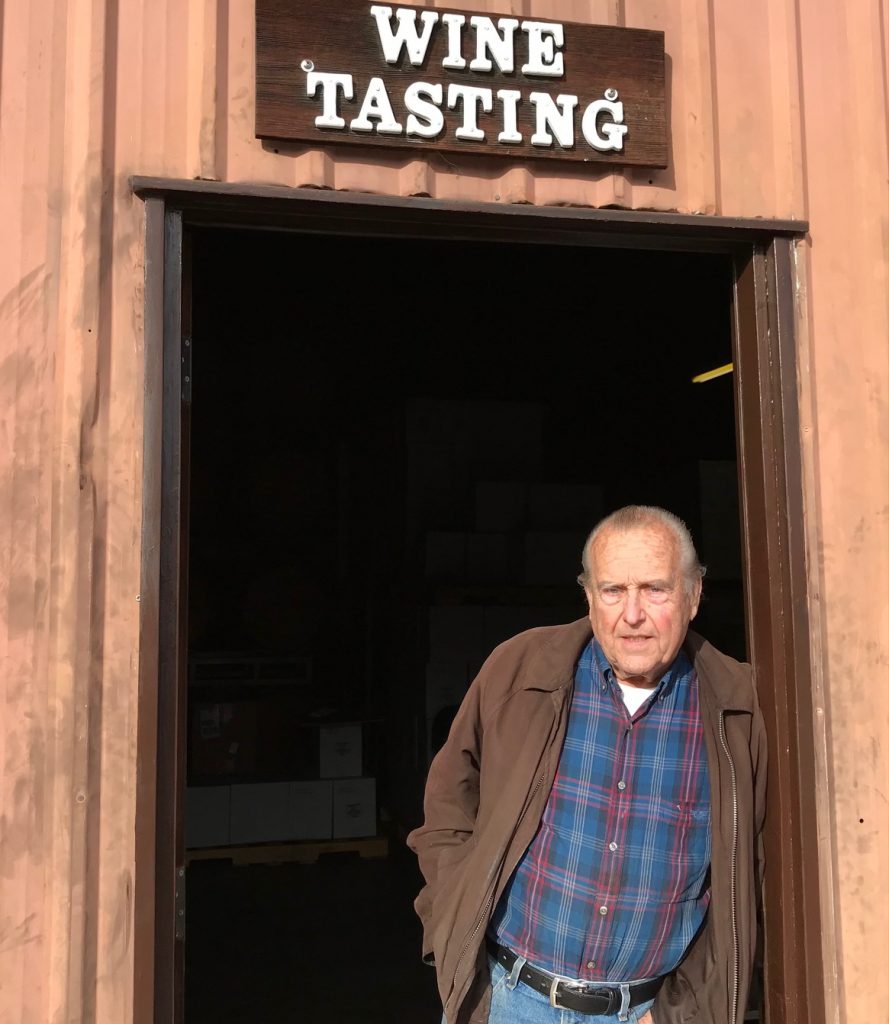
We also tasted his 2017 sangiovese, which Eberle calls an easy-drinking bistro wine. “But this,” he said, holding up a glass of barbera, “is a serious wine, not just a quaffer,” In his 50-years of winemaking, Eberle has produced at least 40 vintages of barbera, adding that it’s his favorite wine after cabernet sauvignon and syrah.
Inspired by Piedmont’s exalted Barolos and Barbarescos (made from the nebbiolo grape), Dave Caparone was the first vintner to plant nebbiolo
(in 1981) and sangiovese (in 1982) in San Luis Obispo County, followed in 1988 by aglianico, which marked the first planting of this variety in the U.S.
“Italian varieties do well in a warm climate,” Caparone commented while seated at his eponymous winery in San Miguel. “I didn’t know then when I planted but it was an educated guess,” said the 81-year old self-taught vintner.
Since the 1970s, Caparone’s conducted extensive research working with different grapes, finally focusing on the three Italian varieties in addition to cabernet sauvignon, merlot and zinfandel. All these red wines are produced as varietal wines, not blends.
We tasted the 2016 nebbiolo, evocative of rose petal aromas with well-integrated tannins; the 2017 sangiovese, effusive of strawberry notes and earthy aromas; and the 2017 earth-driven aglianico (native to Campania), rich with black fruits and anchored with firm tannins.
Chris Ferrara’s reverence to his Sicilian roots and Brian Terrizzi’s nod to his Italian heritage led both to establish exclusively Italian-focused wineries.
Chris and Adrienne Ferrara founded Clesi Wine in 2015 on their 30-acre ranch in the Templeton Gap appellation, with a total of five acres planted to montepulciano, sangiovese, sagrantino and dolcetto. For other varieties, the Ferraras seek out the best fruit from Paso and Monterey County vineyards for a 2,500 annual case production.
Adrienne, who teaches wine business classes in Cal Poly’s Department of Wine & Viticulture, offered a tasting lineup that included the 2019 jasmine-scented malvasia bianca, so seductively perfumey you’d be tempted to dab it behind your ears.
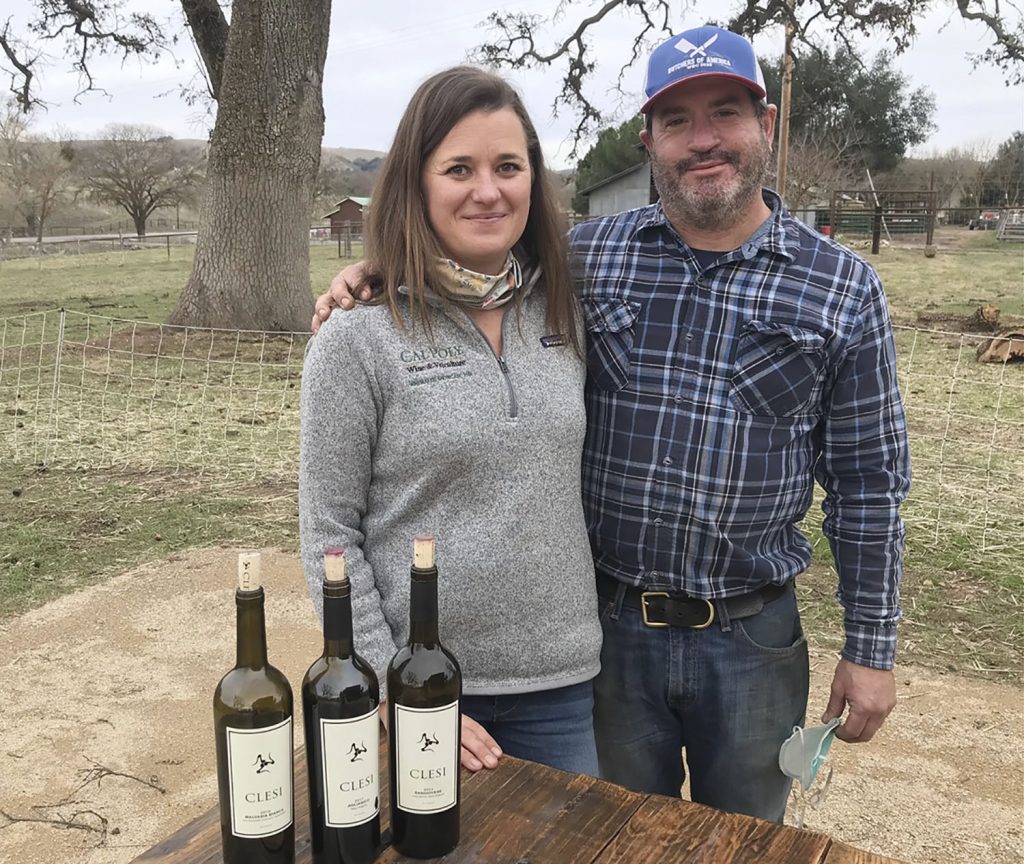
Photos: Mira Honeycutt
Two full-bodied reds included the 2017 nero d’Avola (native to Sicily) ushering a rush of red fruits with bracing acidity and the smoky, earthy 2017 aglianico aged for five months in amphoras (tall terra cotta vessels) and bottle-aged for two years. The 2014 sangiovese was expressive of tart cherry flavor balanced with savory notes. Clesi’s food-focused wines are elegant, expressing freshness and balanced acidity. Others in the portfolio include barbera, montepulciano and dolcetto.
“We are not trying to make flashy wines, focusing instead on grape variety and vintage” noted winemaker Brian Terrizzi of Giornata’s 4,000-case “fatto a mano” (hand-crafted) wines produced from the family’s four-acre vineyard in the El Pomar appellation and sourced from Paso’s Luna Mata vineyard.
The Terrizzi’s showcased their wines on the airy terrace at their Tin City winery, overlooking the railroad tracks. “Most wines are aged in neutral oak,” said Brian. “We are looking to preserve balance and freshness.”
We started with 2019 barbera, aromatic with vibrant boysenberry and moved on to 2017 nebbiolo, showing classic notes of dried roses and gripping yet well-knit tannins and two versions of aglianico — the earthy, floral 2018 from French Camp vineyard and a gamey, peppery 2017 from Luna Mata vineyard expressing intense tannins. “You can lay it down for few years,” Stephy recommended.
We sampled sangiovese three ways – the Il Campo Rosso, a blend which varies with each vintage; a spicy 2017 varietal sangiovese; and a soft and luscious Gemellia, sangiovese blended with merlot and petit verdot.
Giornata’s white lineup includes refreshing, high acid varieties of trebbiano (native to Abruzzi), friulano and ribolla-gialla (both from the Friulli region).
“Italian wines are meant to go with food, that’s why we opened ETTO,” Brian commented on their Pastificio in Tin City where Giornata wines are featured alongside freshly made pasta and other Italian goodies.
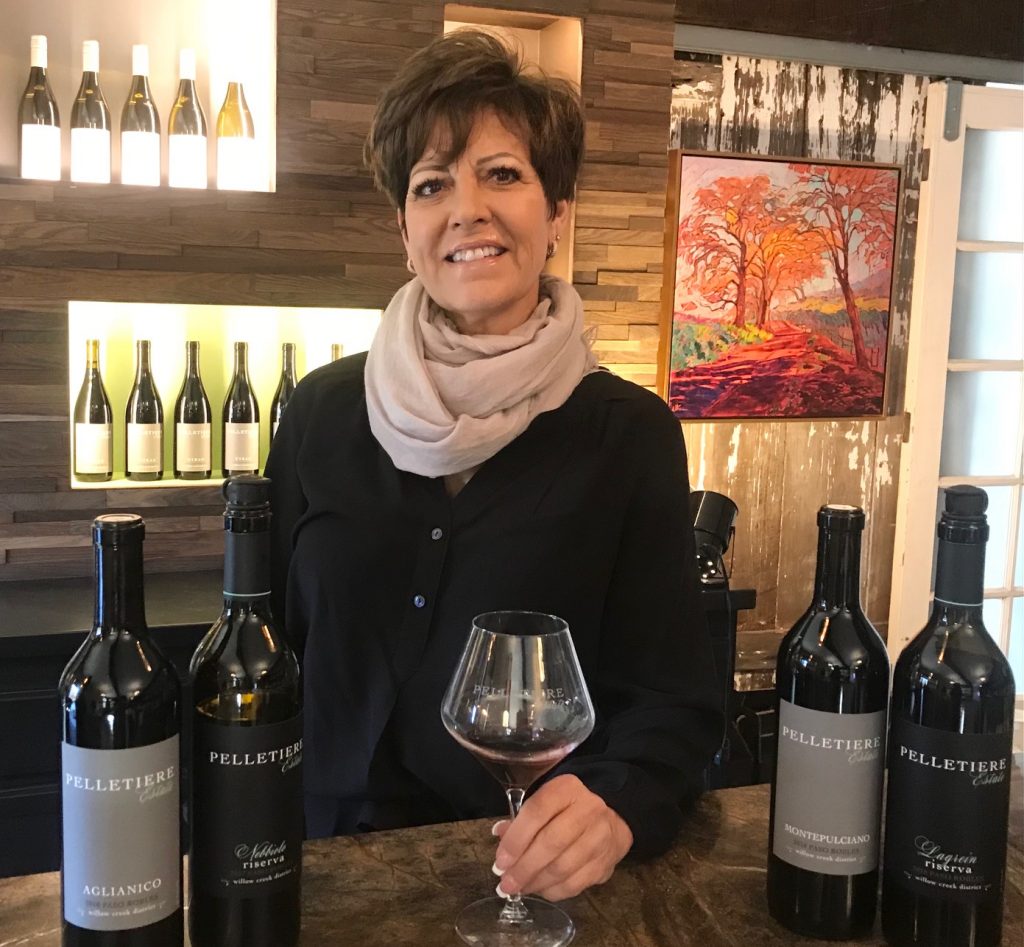
When Janis Pelletiere acquired her 16-acre ranch it came with an existing vineyard planted to Italian varieties. “It was fortuitous,” she recalled. This offered an opportunity to honor her family’s Italian legacy by establishing the Pelletiere Estate Vineyard & Winery in 2014.
Pelletiere added plantings of aglianico and upped the acreage of lagrein (native to the northern Trentino-Alto Adige region), increasing the vineyard planting to 12 acres. The wines crafted by Amy Butler are deliciously bold with marked complexity. “All these wines are inviting and approachable,” said Pelletiere conducting the tasting on the winery’s breezy terrace overlooking the vineyard.
We savored a bold 2017 nebbiolo laced with earthy notes; the 2017 Tievoli, a smoky sangiovese/zinfandel blend; and the deep-hued, cellar-worthy 2018 lagrein, powered with muscle-flexing tannins.
Others in the portfolio include aglianico and montepulciano (the variety from Italy’s Abruzzi region not to be confused with the town of Montepulciano whose Vino Nobile wine is made from sangiovese).
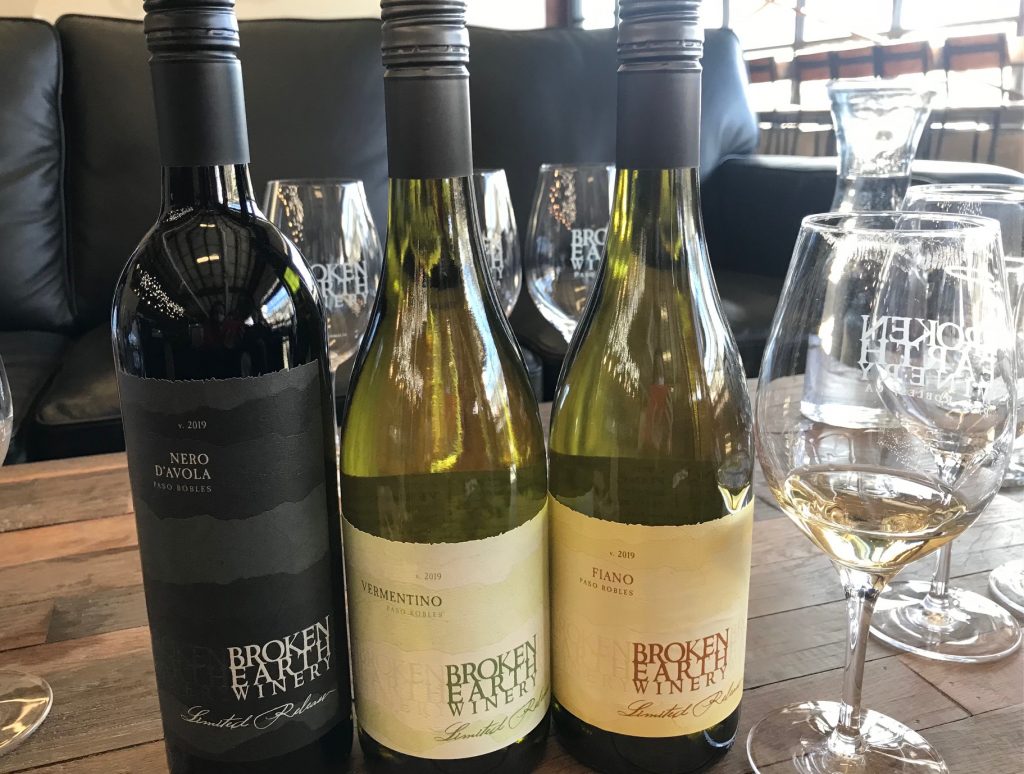
Chris Cameron’s visits to Italy inspired him to initiate planting of varieties such as fiano, vermentino and nero d’Avola at Broken Earth Winery’s east side vineyards.
“These varieties are poised for success here,” commented Cameron on 2019 vintages of fiano and vermentino, white wines ringing with freshness and vibrant acidity. “Fiano can give run for the money to sauvignon blanc,”mused the director of winemaking. The fleshy 2019 nero d’Avola brought a rush of cherries on the palate backed with smooth tannins.
At Pear Valley Estate Wine, I came across the 2018 charbono, an inky, tannic variety that is native to France’s Savoy region, and known as bonarda Piemontese in Italy. “We have two acres that were planted in 2006,” noted winemaker Jared Lee of charbono. Other red varieties include barbera, aglianico and nero d’Avola among the 26 some varieties planted at its east side vineyard.
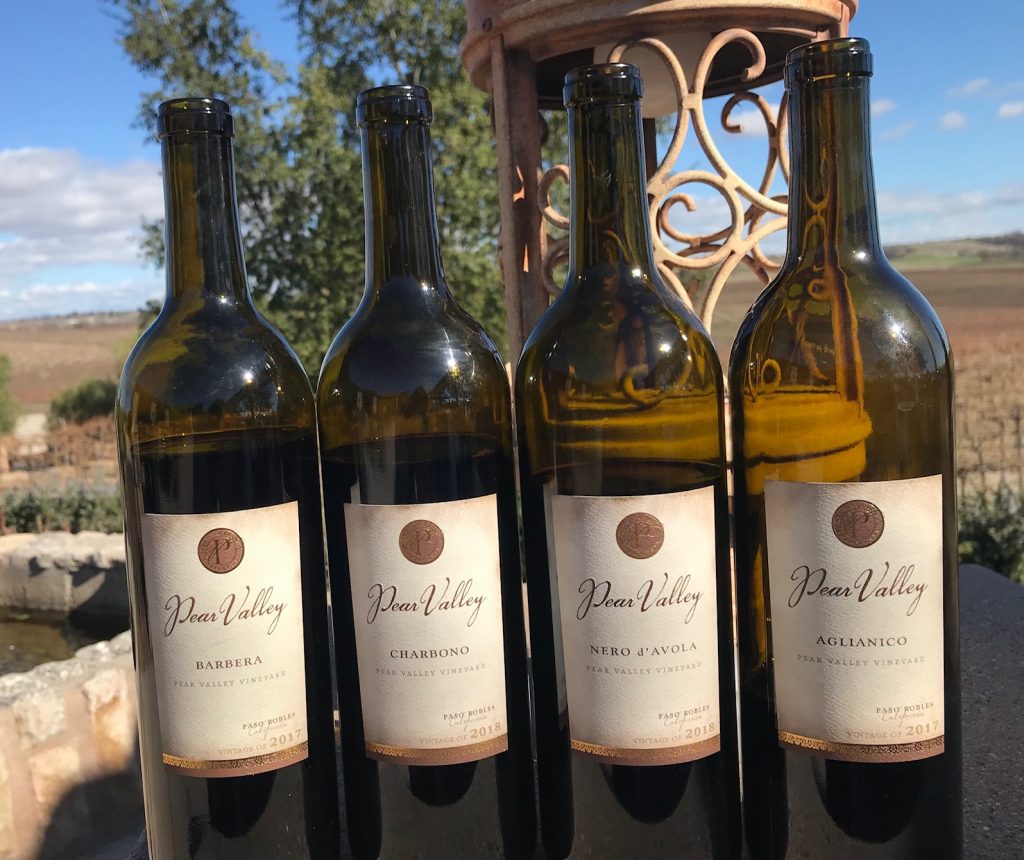
The winery’s direct to consumer model allows the tasting room staff to educate customers on Italian wines. “There’s definitely a market for it,” said Lee.
I found a lighter version of the 2016 plum-laced charbono at Fratelli Perata, an Italian-focused winery founded in 1987. Second generation Kathy Perata also offered a full-bodied, cellar-worthy 2013 barbera and a silky 2015 sangiovese.
Other Paso wineries with a notable Italian-wine portfolio include Lusso della Terra, Castoro Cellars, Bovino, Pianetta and Field Recording.
